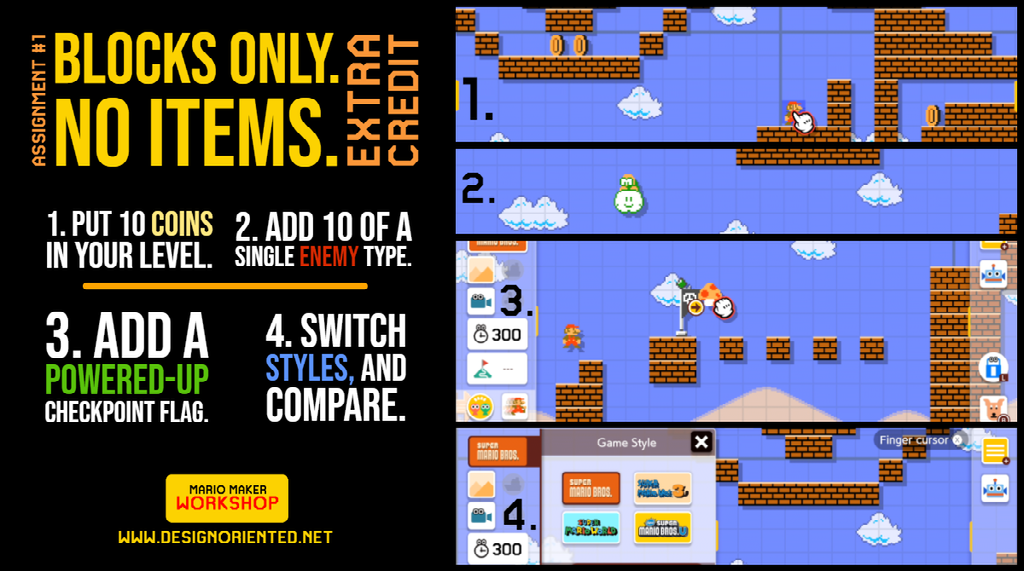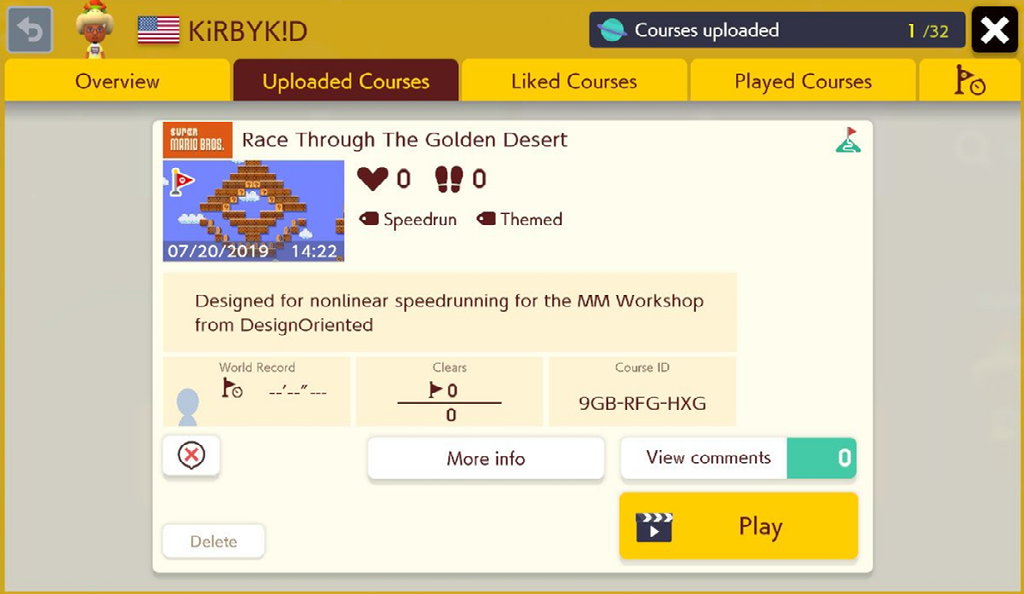Lesson 2: Basic Layout cont.
In Lesson 1 we learned that simply maneuvering Mario is fun. In fact, the basic layout of a course can works well with only a few structural elements. Building courses with blocks only is interesting but not super fun. Fortunately, Mario platformers come with many elements that add dynamic challenge and optional points of interest. In other words, we used 'blocks only' to learn how to build a good course on a good foundation.
Mario level design can be Broken down into "layers" including...
- Mandatory structural obstacles that must be maneuvered around to prevent failure.
- Optional areas and paths not required for course clear.
- Dynamic enemy elements that can move, attack, or challenge Mario in other ways.
- Enticing coin elements that communicate possibilities and reward players for more expressive movement.
- Secrets (areas and objects) that are hidden from plain view. (e.g. ? blocks, some pipes, hidden blocks, optional paths).
- Power-ups that can expand Mario's move-set and increase his survivability.
Each of these layers will be the focus of lessons to come. For now, the workshop experimented with how effective each layer can be. Just a few coins, enemies, or power-ups placed here and there can change the entire course experience.
To Learn how impactful A few extra elements can be, we created this Extra Credit Assignment.
Fun fact: there was a point when the original creators of Super Mario Bros. intended to have fruit for Mario's collectible. But by using the form of money the "enticing object that is always good to collect" fit its function.
“Thus, when we were thinking about something that anybody would look at and go ‘I definitely want that!’, we thought, ‘Yep, it’s gotta be money.'”~ Shigeru Miyamoto
The following tweets are from Workshoppers sharing their design discoveries from the Extra Credit Assignment.
Remember KirbyKid's Assignment #1?
After creating a course out of blocks and mapping out all the movement possibilities, KirbyKid had all the information he needed to add a design layer of coins and power-ups.





